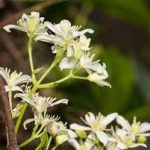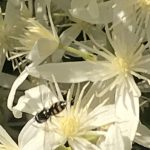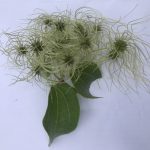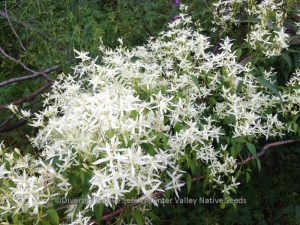Are you a cruciverbalist? It’s a rather fine word for someone who enjoys solving crosswords. Anne and I both enjoy them, Anne from her background as a language scholar and teacher, and me from a background in computer programming, where the different languages, in common with spoken languages, each have their own vocabulary, syntax and grammar.
The Sydney Morning Herald crosswords keep us amused each day – we like to solve the Quick over morning tea and the Cryptic after lunch – a collaborative effort for us as we reckon that two brains are better than one, especially for DA’s fiendishly mind-warping puzzles on Fridays.
And then there is the Omega general knowledge crossword on Mondays, which requires familiarity with sports, art and popular culture, mainly Australian. Solving it is a great way for newcomers to learn something of Australian history. Sample clues are “Children’s TV series with fruit dressed in stripy night attire (7,3,7)” – that’s Bananas in Pyjamas (we knew that one) and “Winner of the Women’s 80m hurdles at the Melbourne Olympics (7,10)” – that’s Shirley Strickland (we had to look that one up).
Imagine our surprise when in this week’s Omega the clue for 23 Across was “They are said in Christ’s Sermon on the Mount to be the children of God (3,11).” Answer, of course, The Peacemakers. Now that’s a bit creepy, and reminiscent of an incident in World War II, in the build up to the D-Day landings on the coast of northern France.
A cruciverbalist who was one of the few civil servants in the know and also an avid completer of the crossword in “The Daily Telegraph” noticed that, over a period of weeks, there was an alarming number of answers which were code words for key elements of the D-Day landings – Utah, Omaha, Juno, Pluto and so-on. This was suspicious. Was a German spy trying to communicate with their homeland? After an investigation, it was decided that the appearance of these key words was no more than a co-incidence and that taking any action could well prove counter-productive.
Back to this week’s Omega crossword. Does someone at the SMH have the best interests of MW Choir at heart? Are they warming up Sydney for the release of Kerry’s magnificant publicity machine next week, complete with posters, postcards and press material persuading everyone to attend our May concert?
It would be nice to think so, but deep down I have a suspicion that it is just another of those delightful occasional co-incidences which brighten up our lives from time to time.
 Most of us in the Choir know Margaret Zanardo as the graphic designer responsible for creating a number of stylish posters and programmes for the Choir over the past ten or so years. Maybe we knew that she had taught English in a variety of schools and colleges. What we did not know – until recently – is that she is a poet.
Most of us in the Choir know Margaret Zanardo as the graphic designer responsible for creating a number of stylish posters and programmes for the Choir over the past ten or so years. Maybe we knew that she had taught English in a variety of schools and colleges. What we did not know – until recently – is that she is a poet.
 A number of people have asked Kerry about the flower and the reason for choosing it for the Bookmark. She responds that it was particularly prolific last September in the bushland areas of the Northern Beaches. She even thought it might be a weed. But after investigating, she discovered it is indigenous to our area, also being found in all three east coast mainland states; hence her interest in having it feature on our bookmarks.
A number of people have asked Kerry about the flower and the reason for choosing it for the Bookmark. She responds that it was particularly prolific last September in the bushland areas of the Northern Beaches. She even thought it might be a weed. But after investigating, she discovered it is indigenous to our area, also being found in all three east coast mainland states; hence her interest in having it feature on our bookmarks. It is clematis glycinoides, a climbing shrub belonging to the ranunculaceae family. Native bees enjoy the flowers, as is seen in the photo. The leaves can be simple or trifoliate. They are ovate or lanceolate, and shiny green. When the leaves are crushed the resulting aroma is so strong and irritating that it reputedly gets rid of headaches. (Kerry hasn’t tried this as she suspects that the cure could be worse than the disease!) Clematis are dioecious, the male and female flowers being carried on different plants. The flowers are only 3 cm across, white or greenish and starry, covering the plants in spring.
It is clematis glycinoides, a climbing shrub belonging to the ranunculaceae family. Native bees enjoy the flowers, as is seen in the photo. The leaves can be simple or trifoliate. They are ovate or lanceolate, and shiny green. When the leaves are crushed the resulting aroma is so strong and irritating that it reputedly gets rid of headaches. (Kerry hasn’t tried this as she suspects that the cure could be worse than the disease!) Clematis are dioecious, the male and female flowers being carried on different plants. The flowers are only 3 cm across, white or greenish and starry, covering the plants in spring. Female flowers produce one seeded, small dry fruit that has a feathery tail up to 6 cm long, which facilitates wide dispersal by the wind. Both the flowers and the fruit are very decorative.
Female flowers produce one seeded, small dry fruit that has a feathery tail up to 6 cm long, which facilitates wide dispersal by the wind. Both the flowers and the fruit are very decorative.